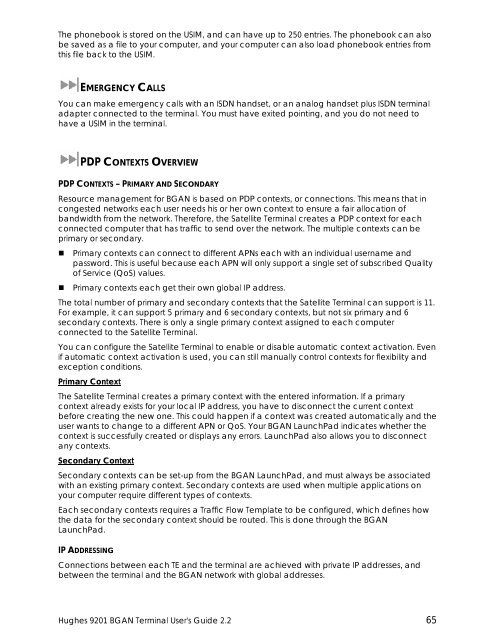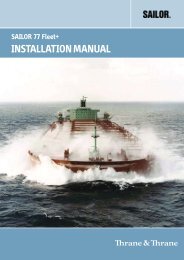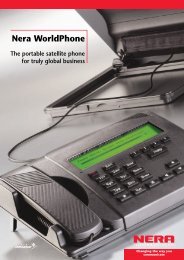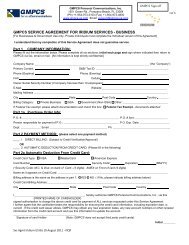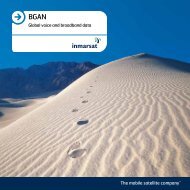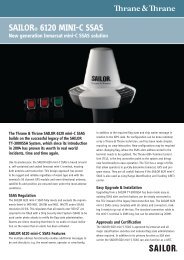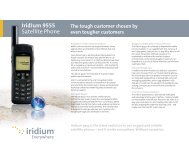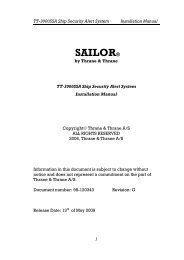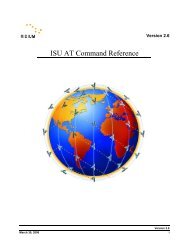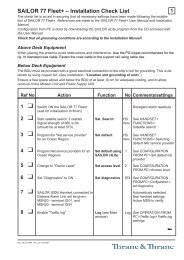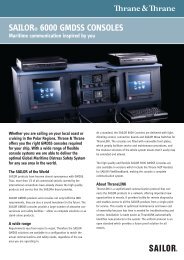Hughes 9201 BGAN Terminal User's Guide 2.2 - GMPCS Personal ...
Hughes 9201 BGAN Terminal User's Guide 2.2 - GMPCS Personal ...
Hughes 9201 BGAN Terminal User's Guide 2.2 - GMPCS Personal ...
Create successful ePaper yourself
Turn your PDF publications into a flip-book with our unique Google optimized e-Paper software.
The phonebook is stored on the USIM, and can have up to 250 entries. The phonebook can alsobe saved as a file to your computer, and your computer can also load phonebook entries fromthis file back to the USIM.EMERGENCY CALLSYou can make emergency calls with an ISDN handset, or an analog handset plus ISDN terminaladapter connected to the terminal. You must have exited pointing, and you do not need tohave a USIM in the terminal.PDP CONTEXTS OVERVIEWPDP CONTEXTS – PRIMARY AND SECONDARYResource management for <strong>BGAN</strong> is based on PDP contexts, or connections. This means that incongested networks each user needs his or her own context to ensure a fair allocation ofbandwidth from the network. Therefore, the Satellite <strong>Terminal</strong> creates a PDP context for eachconnected computer that has traffic to send over the network. The multiple contexts can beprimary or secondary.• Primary contexts can connect to different APNs each with an individual username andpassword. This is useful because each APN will only support a single set of subscribed Qualityof Service (QoS) values.• Primary contexts each get their own global IP address.The total number of primary and secondary contexts that the Satellite <strong>Terminal</strong> can support is 11.For example, it can support 5 primary and 6 secondary contexts, but not six primary and 6secondary contexts. There is only a single primary context assigned to each computerconnected to the Satellite <strong>Terminal</strong>.You can configure the Satellite <strong>Terminal</strong> to enable or disable automatic context activation. Evenif automatic context activation is used, you can still manually control contexts for flexibility andexception conditions.Primary ContextThe Satellite <strong>Terminal</strong> creates a primary context with the entered information. If a primarycontext already exists for your local IP address, you have to disconnect the current contextbefore creating the new one. This could happen if a context was created automatically and theuser wants to change to a different APN or QoS. Your <strong>BGAN</strong> LaunchPad indicates whether thecontext is successfully created or displays any errors. LaunchPad also allows you to disconnectany contexts.Secondary ContextSecondary contexts can be set-up from the <strong>BGAN</strong> LaunchPad, and must always be associatedwith an existing primary context. Secondary contexts are used when multiple applications onyour computer require different types of contexts.Each secondary contexts requires a Traffic Flow Template to be configured, which defines howthe data for the secondary context should be routed. This is done through the <strong>BGAN</strong>LaunchPad.IP ADDRESSINGConnections between each TE and the terminal are achieved with private IP addresses, andbetween the terminal and the <strong>BGAN</strong> network with global addresses.<strong>Hughes</strong> <strong>9201</strong> <strong>BGAN</strong> <strong>Terminal</strong> <strong>User's</strong> <strong>Guide</strong> <strong>2.2</strong> 65


